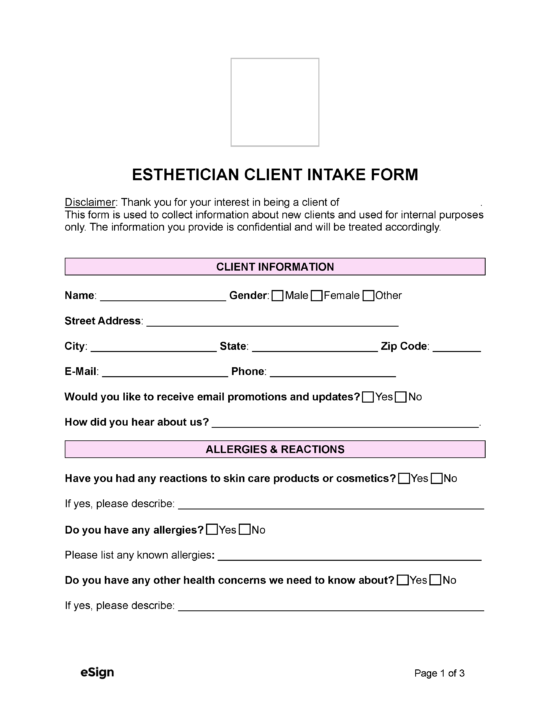Licensing Requirements
Estheticians must be licensed by the appropriate governing body of their state, such as the health department, business/professional department, or state board of cosmetology (or equivalent).
To become a licensed esthetician, an individual must complete:
- High school (not required by all states)
- A state-mandated number of hours of training at an esthetician school
- An apprenticeship (not required by all states)
- The state board exam
What to Include
Client Details
The client’s name, address, phone number, and email must be provided.
Allergies & Reactions
It’s vital that the esthetician is provided a list of any medical conditions or allergies the client has, as well as medications they take that may cause a reaction to skin treatments.
Skin Type & Condition
The client will often be asked to specify their skin type, current condition, and concerns so the esthetician can tailor their treatment for an optimal result.
Skin Care
Including the client’s skincare routine and professional treatments or procedures helps the esthetician adapt their treatment to avoid negative interactions with any products the client uses or procedures they’ve had.
Acknowledgment & Release
This section requires that the client not hold the esthetician or business liable for any adverse effects or undesirable results arising from their treatment. The language should state that the client has disclosed all relevant information, that they undertook treatment voluntarily, and assume full responsibility.
Client Signature
Once the previous sections are completed, the client must print their name, provide their signature, and enter the form’s signing date.
Esthetician vs. Aesthetician
Estheticians work either independently or at spas, salons, or resorts and provide cosmetic services, including the following:
- Cleansing and exfoliation
- Applying facial masks
- Performing facials
- Massage
- Hair removal
- Preparation and post-injection care for botox
- Product recommendations
Aestheticians generally work at clinics, hospitals, or rehabilitation centers and specialize in medical treatments such as those listed below. An aesthetician will most likely use a patient client intake form for new clients.
- Skin rejuvenation or resurfacing
- Microlaser peels
- Scar or blemish reduction
- Hair or tattoo removal
- Botox injections

